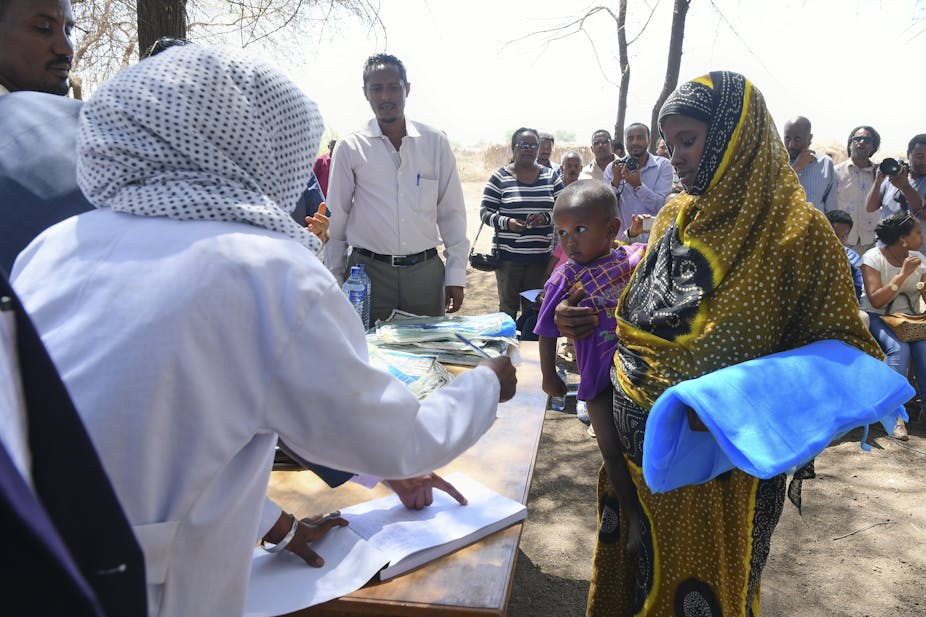Foreign aid, or official development assistance, is controversial. The expectation is that it should benefit the most vulnerable countries but this is not always the case.
In 2016, only about 19.8% of traditional aid went to the world’s least developed countries. This was down from 23.7% in 2015 and a peak of 26.9% in 2010. African countries such as Côte d'Ivoire, Democratic Republic of the Congo, Ghana, Mozambique and Senegal are among those that now receive less aid than they did in 2010.
Traditional bilateral aid to Africa continues to decline despite the fact that 34 of the countries on the continent are classified as least developed countries - the so-called LDCs.
One reason for the decline in development assistance to poor countries is the rise in foreign aid peculiarities like the so-called “in-donor refugee costs”. This refers to foreign aid meant for refugees that donors spend in their own countries. International conventions allow provider countries to use development aid to support refugees during the first twelve months of their stay.
Between 2010 and 2016, as foreign aid to many poor countries decreased, in-donor refugee costs rose from USD$3.3 billion to USD$15.4 billion. This is a USD$12.1 billion increase in six years. In contrast, aid that flowed to countries in need increased marginally from USD$103.4 to USD$113.4 billion between 2005 and 2016. That amounts to a USD$10 billion increase over an 11-year period.
Explaining the mismatch
The mismatch between need and actual aid distribution shouldn’t be surprising. Why? Because countries typically allocate aid based on three criteria, the first being self-interest. The others are need and merit. Problems arise when decisions must be made on the weight of each criterion.
Self-interest is particularly complex. Different providers have different levels of self-interest. Furthermore, levels of self-interest differ from administration to administration even within the same provider countries. When it comes to non-state providers different funders within the same country can also exhibit varying interpretations of self-interest.
One of the most enduring illustrations of the connection between self-interest and aid allocation can be seen in the voting patterns at the United Nations General Assembly where the interests of nation states outweigh need or merit. Nation states are more likely to give aid to their trade partners over their non-trade partners. In addition, researchers have found indications that providers are prone to allocate disproportionate amounts of aid to recipients who have the same allies and rivals.
While self-interest has its issues, the merit and need criteria are also complex. Studies have found that in some countries aid actually decreased as the policy environment improved. Put differently, even as countries’ merit ratings improved (better policy environments), they started receiving less aid. Conversely, in some cases, perceived need trumps merit especially in instances of food aid. This continues to be the case in countries like Ethiopia and South Sudan where oppressive governance systems and ethnic conflict have prevailed for years.
A fourth criterion
All things considered, the most deserving and impoverished countries don’t often get the most foreign aid. This much is clear and can be explained with reference to the complexity of balancing self-interest, need and merit.
But this doesn’t answer some fundamental questions such as, what are the limits to self-interest? Shouldn’t need and merit be more important than self-interest? And finally, should need, merit and self-interest be the only criteria?
The Global Partnership for Effective Development Cooperation has provided some direction in this regard by emphasising a fourth criterion: effectiveness. Over the past few years I have had the opportunity to collaborate closely with the Global Partnership, which represents the vast majority of the world’s provider and recipient countries.
By emphasising effectiveness, it prioritises country ownership, accountability, transparency, results orientation, and inclusive partnerships as the requirements for aid effectiveness. So far, aid effectiveness is receiving wide support from both developed and developing countries, including regional organisations like the African Union.
Going forward, metrics that quantify the effectiveness of aid will be very helpful not only for understanding current aid distribution patterns, but also for influencing future aid allocation.

